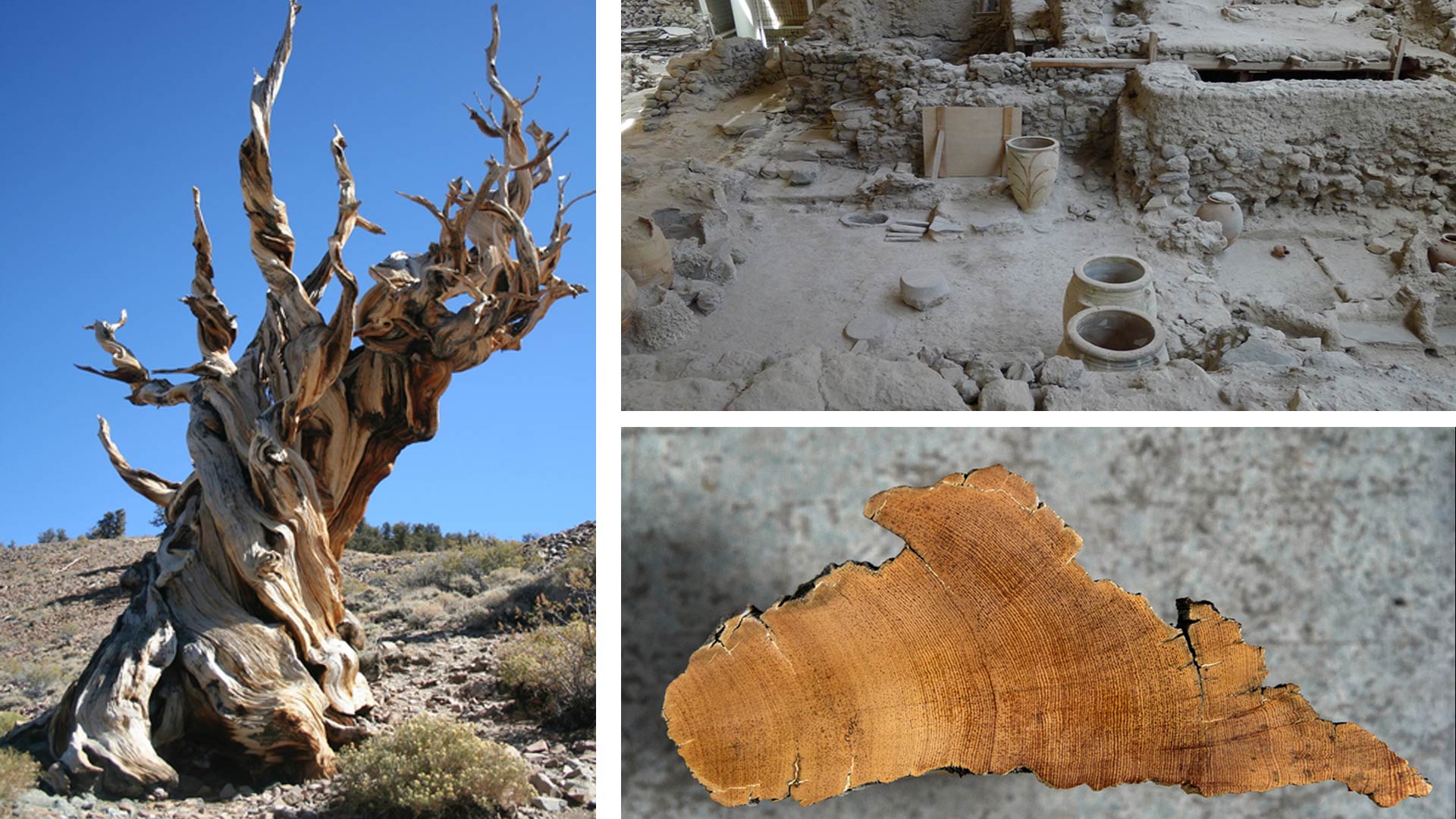 Charlotte Pearson and her colleagues used two different tree-ring chronologies from long-lived trees that were alive at the time of the Thera eruption, including bristlecone pines in California and Nevada. Top right, artifacts in Akrotiri, the Minoan town on Santorini damaged by earthquakes and buried in ash by the eruption. Bottom right, high-altitude bristlecone pine.
Charlotte Pearson and her colleagues used two different tree-ring chronologies from long-lived trees that were alive at the time of the Thera eruption, including bristlecone pines in California and Nevada. Top right, artifacts in Akrotiri, the Minoan town on Santorini damaged by earthquakes and buried in ash by the eruption. Bottom right, high-altitude bristlecone pine.
A study led by University of Arizona may help scientists settle the contested timing of one of the largest volcanic eruptions of the last 4,000 years.
The massive Bronze Age explosion that collapsed the Greek island of Thera (now known as Thíra, sometimes called Santorini) also spread ash that dimmed the sun across the Eastern Mediterranean.
That physical layer could let scholars link the histories of many ancient peoples — if they could only agree on when it happened.
 VIEW LARGER Charlotte Pearson at the University of Arizona Laboratory of Tree-Ring Research.
VIEW LARGER Charlotte Pearson at the University of Arizona Laboratory of Tree-Ring Research. Archaeological data and radiocarbon dating argue for eruption dates 30-140 years apart. But with this study, the team led by UA tree ring expert Charlotte Pearson helped close the gap.
"The dating range that's presented by this data is one that is wide enough for it to run into that period of overlap with some of these other lines of evidence, which haven't previously overlapped."
The Scientific Advances study updated the tree-ring data on which the carbon-14 dating was based.
Radiocarbon dating looks at the proportion of radioactive carbon to stable carbon in once-living things. While alive, plants and animals take in carbon from the environment, and this proportion remains fairly constant. After death, no new carbon comes in, and the ratio changes as the radioactive carbon decays.
 VIEW LARGER The largest island in the ring is the tourist mecca of Santorini (also known as Thira), while the other islands are Thirasia and Aspronisi. The three pieces are what remains after an enormous eruption destroyed most of a volcanic island.
VIEW LARGER The largest island in the ring is the tourist mecca of Santorini (also known as Thira), while the other islands are Thirasia and Aspronisi. The three pieces are what remains after an enormous eruption destroyed most of a volcanic island. Scientists can use the resulting ratios to estimate the age of remains, but linking that age to a date requires calibrating the carbon-14 ratios to a known source. Tree rings provide a useful yardstick for this purpose, so some radiocarbon curves were calibrated to the tree-ring record.
Technological limitations limited those early tree-ring calibrations to multi-year blocks of 5, 10 or 20 years. But newer methods let the research team analyze tree rings year-by-year. The updated carbon-14 curve supported a date range that overlapped with archaeological estimate.
"There's nothing about this study which in any way undermines the calibration curve. All this does is it provides a basis toward that ongoing scientific process of which we're all a part, trying to make things better," said Pearson.


By submitting your comments, you hereby give AZPM the right to post your comments and potentially use them in any other form of media operated by this institution.